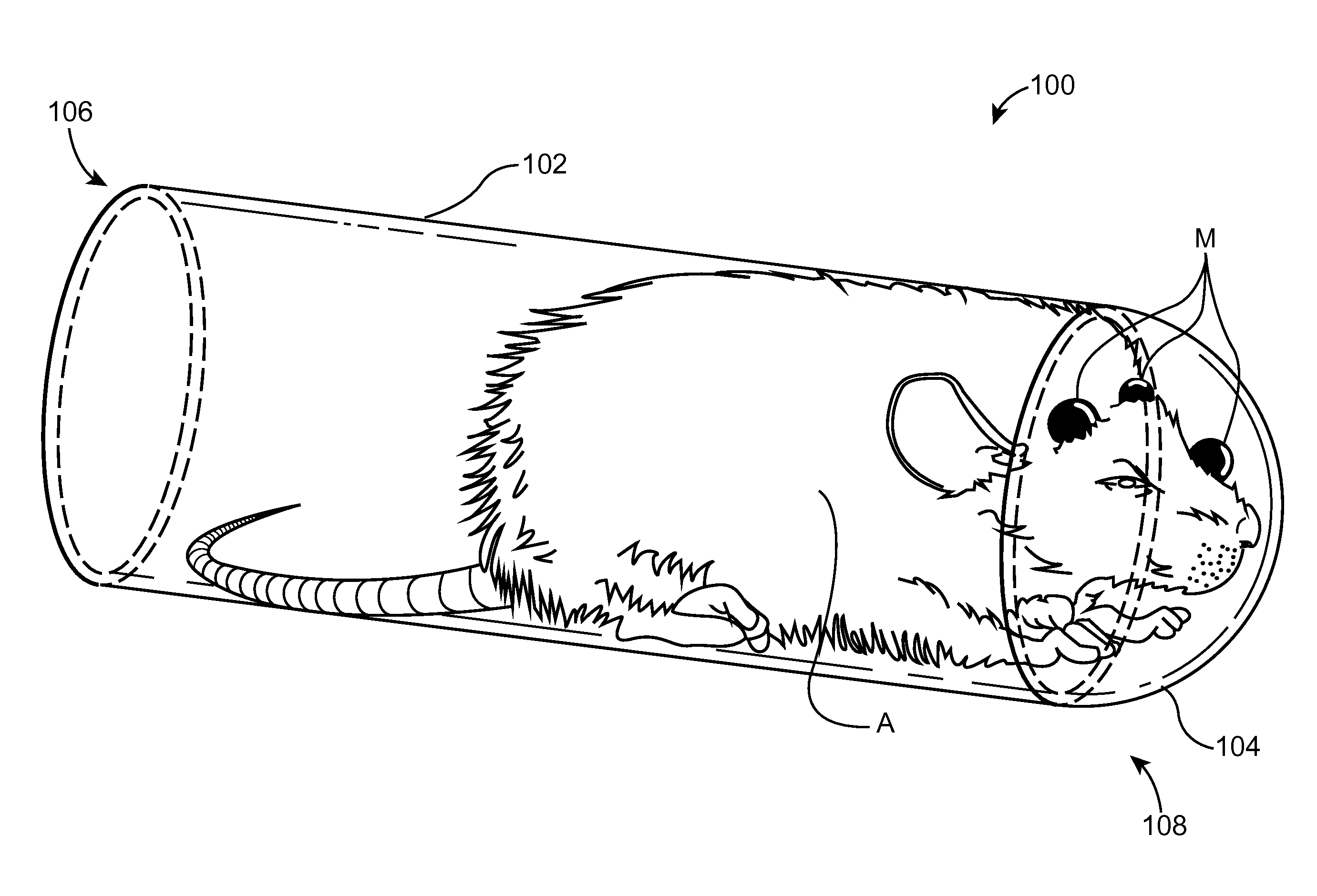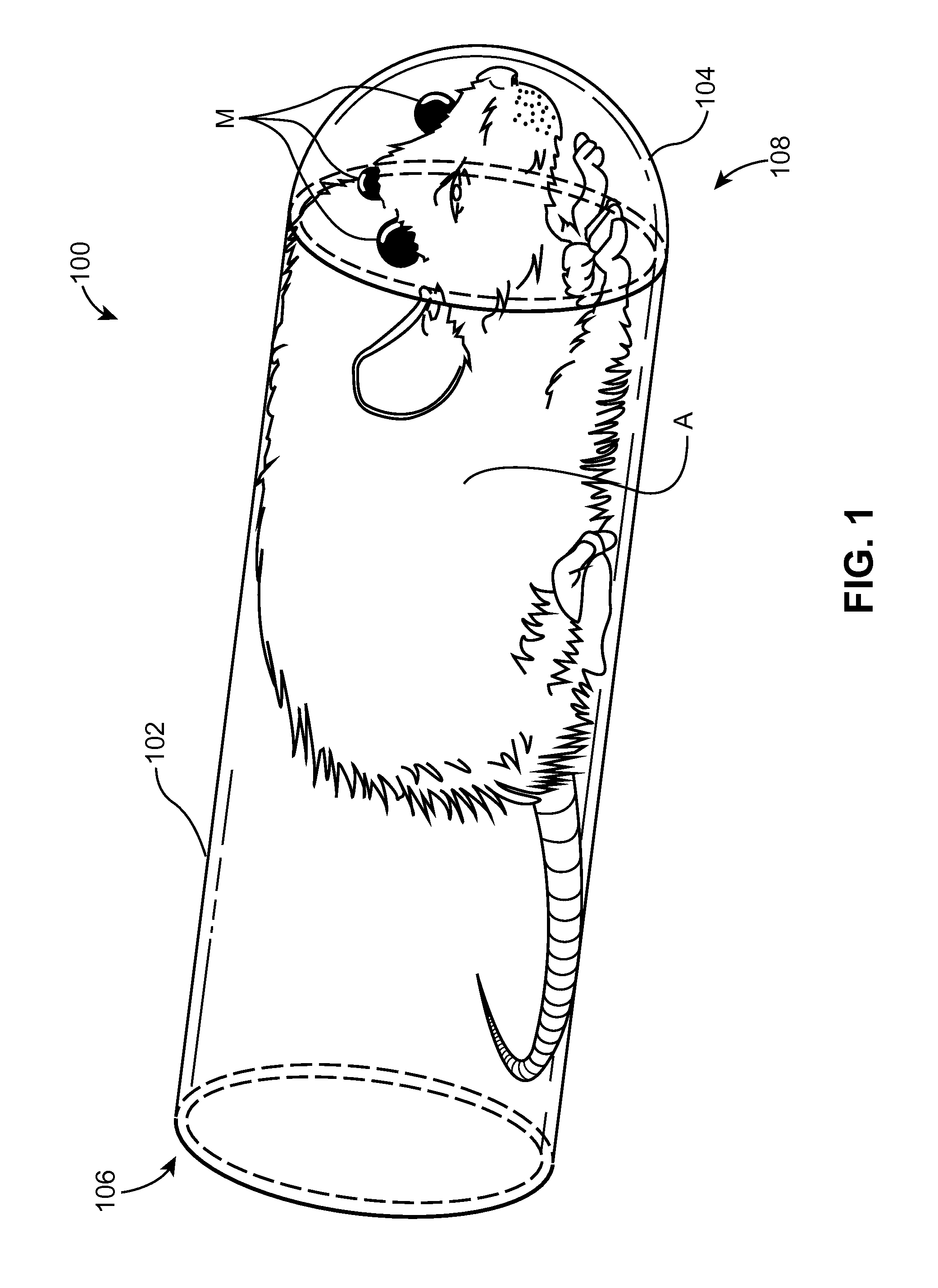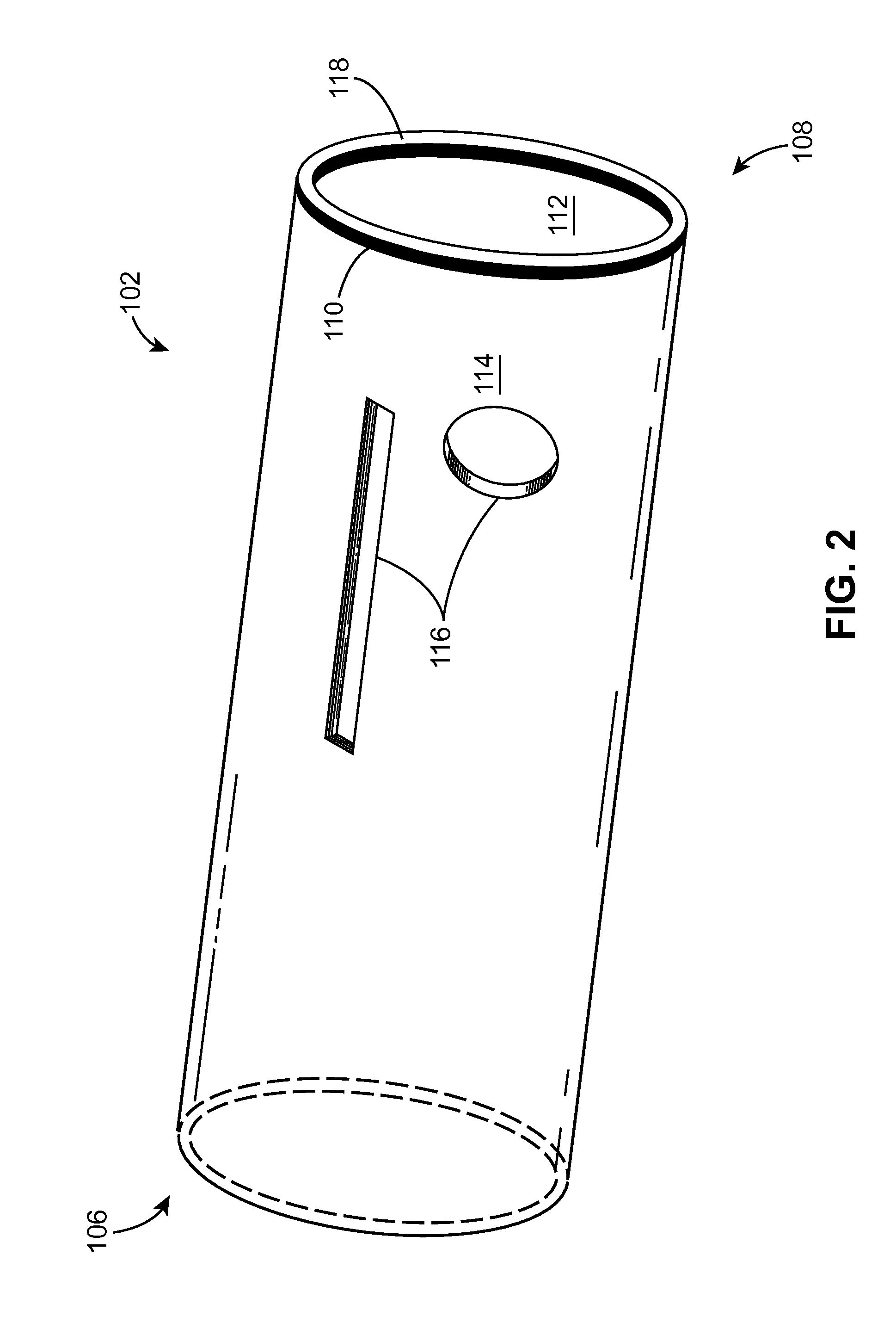Enclosure for small animals during awake animal imaging
- Summary
- Abstract
- Description
- Claims
- Application Information
AI Technical Summary
Benefits of technology
Problems solved by technology
Method used
Image
Examples
Embodiment Construction
[0019]Referring first to FIGS. 1-3, an enclosure 100 restrains an awake animal (A), such as a rat or a mouse, during a medical imaging procedure. In order to correct the images for the 3D motion of the awake animal (A), two cameras are used to capture the positions of the artificial markers (M) affixed to the animal (A), which are illuminated by infrared light emitting diodes (LEDs) as described in the incorporated references. The imaging procedure and motion correction equipment and methods are fully described in the incorporated references and a full description will not be included here for brevity. In the example of FIG. 1, the enclosure 100 includes a body 102 and a viewing window 104 that is a separate and detachable element from the body 102.
[0020]The body 102 is a tubular structure, defining an interior volume for accepting the animal (A), and having a cross sectional shape that is preferably circular (shown). Shapes such as square, rectangular, triangular, elliptical, or so...
PUM
 Login to View More
Login to View More Abstract
Description
Claims
Application Information
 Login to View More
Login to View More - R&D
- Intellectual Property
- Life Sciences
- Materials
- Tech Scout
- Unparalleled Data Quality
- Higher Quality Content
- 60% Fewer Hallucinations
Browse by: Latest US Patents, China's latest patents, Technical Efficacy Thesaurus, Application Domain, Technology Topic, Popular Technical Reports.
© 2025 PatSnap. All rights reserved.Legal|Privacy policy|Modern Slavery Act Transparency Statement|Sitemap|About US| Contact US: help@patsnap.com



